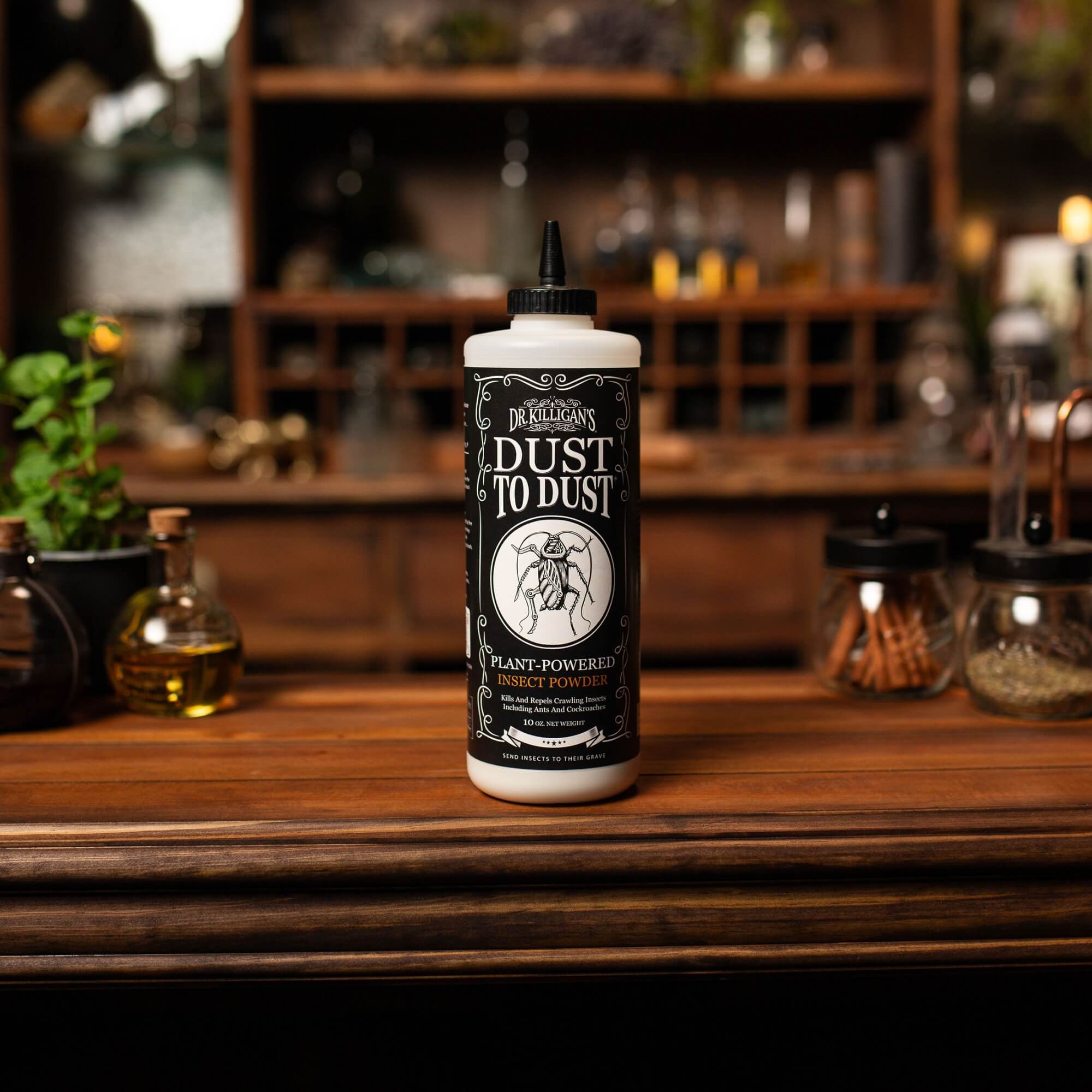Updated on September 17, 2024
During a recent excursion at a burger joint, I overheard a child of not more than six years old inquire to his mother about the origin of babies.
He sat at the table directly across from mine. Ketchup was smeared along his sun-tanned cheeks and his pudgy little fingers looked shiny and slightly dangerous—a mixture of grease and salt—from his paper cup of french fries. Before his mother could stomach her next bite, I heard the youngster—without hesitation—ask, “Why is the sky blue? And can ants swim?”
I hadn’t spent much time around children, but couldn’t help but consider this one-sided animated conversation. This school-ready child was very inquisitive. His mother smiled calmly. As she took a long drink of soda through a kinked plastic straw, I caught her eye.
"I could tell your son a bit about ants, if you'd like?" I asked.
She beamed as she nodded, and I slid my chair over to their table.
Can ants swim?
It might seem far-fetched to imagine ants paddling through water, but some species have indeed adapted remarkable strategies to survive in aquatic environments.
- Fire ants: Fire ants can form a floating raft by locking their bodies together, using the water's surface tension to stay afloat during floods. This survival tactic allows them to drift to dry land, where they can reestablish their colony.
- Silver ants: Silver ants can briefly submerge themselves to escape predators or floods, effectively 'swimming' to safety.
- Diving ant (Camponotus schmitzi) of Borneo: This ant dives into water pooled in carnivorous pitcher plants to steal insects trapped there. Remarkably, these ants can withstand the digestive enzymes of the pitcher plant, allowing them to swim and forage within these liquid graves without harm.
- Canopy ants: Many canopy ants can run (or 'swim') across the surface of the water, with their hind legs functioning as rudders or stabilizers.
- Black carpenter ant (Camponotus pennsylvanicus): Although primarily land-dwellers, these ants can swim by paddling with their forelegs and rowing with their mid-legs. Note: Research in the Annals of the Entomological Society of America highlights their longer forelegs, which enhance their swimming speed and distinguish them from slower swimmers.
What ants have wings?

While it might surprise some, some members of almost all ant species—including black garden ants, carpenter ants and black ants—can produce a generation of winged offspring at certain times of the year.
The saga begins with a thriving ant colony, where the queen decides it's time for expansion. Initially, she produces only sterile, female worker ants. As the colony flourishes, however, the queen introduces a twist: she starts producing reproductive ants—both male and female—with wings. These winged ants, meticulously cared for by their worker sisters, are ultimately prepared for flight.
So, the real question is not 'What ants have wings', but 'Why do ants have wing?'
Why do flying ants suddenly appear?
Flying ants are often observed suddenly swarming in large numbers during what is known as "nuptial flights." This natural phenomenon typically unfolds from early to mid-spring, under ideal environmental conditions. As winged queens and male ants commence their flight, they release pheromones that signal other members of their colony to join in a massive, synchronized aerial display.
Purpose of nuptial flights: The spectacle of swarming serves multiple purposes. Reproductively, it enables ants to mate and establish new colonies, essential for the continuation and expansion of their species. This process diversifies their genetic pool and reduces vulnerabilities to disease that often come with inbreeding. From a survival perspective, the sheer number of ants in the air simultaneously offers protection against predators, although many still fall prey to birds and dragonflies or face environmental challenges.
Do ants lay eggs?
The queen ant is a prolific egg-layer. After secluding herself within her nest, she spends several weeks meticulously laying and tending to her eggs until they hatch. Throughout the rest of her life, which she spends entirely within this nest, the queen remarkably never mates again after her initial flight, yet she is capable of laying thousands, if not millions, of eggs.

A bit of backstory: Mating usually occurs mid-air—during this nuptial flight. Once fertilized, the female ant immediately searches for a suitable site to establish her colony. The male ant, having served his purpose, dies shortly after mating. It's interesting to note that male ants typically receive less nutrition during their lifespan, which impacts their longevity post-mating.
Upon selecting the perfect site, the female ant does something revolutionary. In a striking act signifying the start of her new life, she breaks off her wings and consumes them, marking the end of her flying days and the beginning of her role as a colony founder and a queen. The nutrients from her discarded wings supply her with the necessary sustenance to lay eggs and support her through the initial and critical phase of colony establishment.
Do black ants make a colony inside a house?
Ants, including black ants, most often prefer to establish their nests outdoors, where they find ample food and optimal nesting sites. However, with expanding human populations increasingly encroaching on their habitats, encounters between humans and ants are inevitable.
Black ants (commonly known as house ants): While black ants typically establish their primary colonies outdoors, they can and do enter homes. Indoors, black ants often build satellite colonies where they sense warmth and moisture, such as in wall voids, behind large appliances, within insulation or under floors.
To better prepare homeowners for any ant invasion, here is an overview of other common ant species that may enter indoor spaces:

- Carpenter ants: Outdoors, the large carpenter ants build their nests in stumps, fallen trees or old, abandoned logs. Indoors, nests are likely to be found in moist wood damaged by water leaks, such as those around sinks, bathtubs, windows or door frames (that are poorly sealed), weakly flashed chimneys and roof leaks.
- Pavement ants: Outdoors, pavement ants make their nests in sidewalk cracks and under stones. Indoors, nests are most likely in ground-level masonry walls, but can also be found in insulation and under floors.
- Odorous house ants: Outdoors, odorous house ants build their nests in exposed soil, beneath firewood or loose tree bark, in mulch beds or under stones and wood piles. Indoors, they nest near moisture sources, such as in wall voids near hot water heaters, inside water pipes, under carpets and beneath floors.
- Fire ants: Outdoors, fire ants construct hills, also called mounds, by pushing up soil as they burrow in the earth. They prefer open, sunny areas—meadows, playgrounds, parks, golf courses and lawns—but will nest in nearly any type of soil. These ants may trek indoors, but they do not build their nests indoors.
What looks like little ants with wings?
If you discover flying insects indoors, it's important to determine whether they are flying ants or termites before deciding on a method to manage the infestation. Although they appear similar, the two species differ significantly in their habits and the potential damage they can cause. Winged ants carve out tunnels and galleries in decaying wood to nest, while termites actually consume the wood, which can lead to severe structural damage to your home.
Termites

- Equal length wings that are long and uniform
- Straight antennae
- Straight, wide abdomen
- Color range from white to light brown to dark brown
Flying ants
- Unequal length wings: the front is noticeably larger than the back
- Bent antennae that seem to “elbow”
- Thin, pinched abdomen with a clearly visible "waist"
- Color range is black, brown or reddish
How do I get rid of flying ants?
Ants are some of the most prolific insects in the world; their population is estimated to be somewhere between 10 and 100 quadrillion worldwide, meaning there are roughly 2.5 million ants per person. Because of their clever nature and resourcefulness, they can be extremely hard to exterminate. They are the ultimate colonial survivors.
If you find that you have flying ants—known as alates—in your home, they are likely on a quest to create a new colony, as foraging worker ants—those not flying—of any species do not have wings. Some of the more common alates ants that will invade your home are carpenter ants, pavement ants or odorous house ants. (Fire ants—as mentioned above—do not nest indoors).
Know that these flying ants are no more dangerous than their non-flying counterparts that you may discover marching across your kitchen floor. If this ant species doesn’t sting, bite or pose a threat to humans, neither will its flying variety.
To get rid of flying ants—

- Vacuum Use your vacuum cleaner at will and suck up any crawling or flying ants. Make sure to remove the contents straight away.
- Seal up entry locations Look for and seal entry points. (This will prevent more ants from entering your home.)
- Use the Insect Buster First, fill this bulb duster with diatomaceous earth or another non-toxic insect powder. Next, use the Insect Buster to disperse a thin layer of this powder wherever you have seen ant traffic. “Puff” inside of any cracks and crevices where the ants may be attempting to establish a colony. Note: Ants must come into contact with this powder for it to be effective. Unlike ant bait, it is not carried back to the colony.
- Use Dust to Dust As an alternative to diatomaceous earth, fill your Insect Buster with Dust to Dust Plant-Powered Insect Powder. Dust to Dust is a safer and more effective option for insect control. It is proven to have kill times up to 50% faster than diatomaceous earth.
- Inspect for structural damage. Look for signs of sawdust under damaged wood. Flying ants do not cause damage like termites, as they do not eat the wood, but they can chew through and hollow out the wooden areas of your home, especially wood that has been damaged by water or is in the process of breaking down or rotting. If you find structural damage, remove and replace any rotten, decaying wood found in your walls or under your floors. This will remove the colony’s nesting site.
Endless discoveries in the natural world
As I finished sharing these fascinating insights about ants with the young boy, his eyes lit up with curiosity and wonder. His mother thanked me, noting how this unexpected lesson at lunch would surely fuel her son’s interest in the natural world for days to come. It was a reminder that sometimes, the most intriguing questions asked by a child can lead us to explore and appreciate the incredible intricacies of nature that surround us. Whether it's the architectural prowess of ants or their unexpected abilities, there’s always more to learn about these tiny, yet mighty, inhabitants of our planet.













